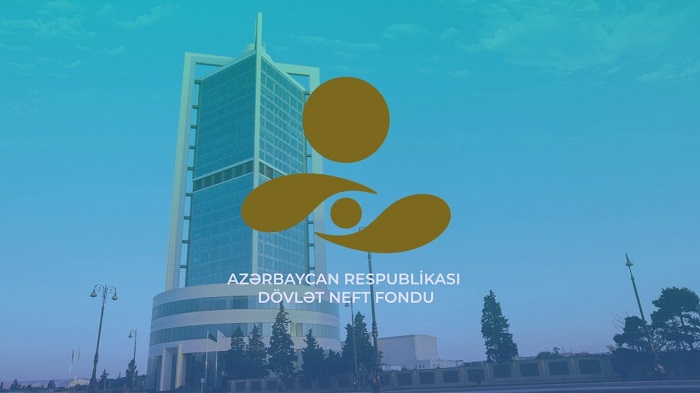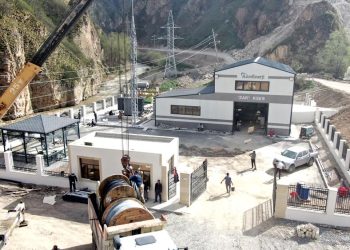 When officials from energy companies in three countries signed an agreement last week to revive a project to enable Russian gas to flow to Italy via Greece there was one crucial party missing: Bulgaria. So when Gazprom CEO Alexei Miller signed a memorandum of understanding in Rome on 24 February with Greece’s Depa and Italy’s Edison, it naturally prompted one key question: How was Russia proposing to get the gas to Greece in the first place?
When officials from energy companies in three countries signed an agreement last week to revive a project to enable Russian gas to flow to Italy via Greece there was one crucial party missing: Bulgaria. So when Gazprom CEO Alexei Miller signed a memorandum of understanding in Rome on 24 February with Greece’s Depa and Italy’s Edison, it naturally prompted one key question: How was Russia proposing to get the gas to Greece in the first place?
It also raised a second, and equally pertinent, question: Why would Gazprom seek to promote this idea when it seemed to have made up its mind that, so far as new export routes to Europe were concerned, all its efforts would be focussed on developing Nord Stream 2?
Although neither Russian nor Bulgarian officials have confirmed this, the answer to the first question is clearly Bulgaria. But there is rider to such an answer: Bulgaria would be the transit route to Greece if, indeed, Gazprom were ever to proceed with a somewhat adapted revival of the ITGI/Poseidon project for an interconnector between Turkey, Greece and Italy whose final section would consist of the long-mooted 207-km direct subsea pipeline, known as Poseidon, from Thesprotia in Greece to Otranto in Italy.
But that is a very big ‘if’ indeed. In practical terms, it would require a modest adaption of the overall 787-km ITGI plan, to enable it to start at Greece’s border with Bulgaria rather than at Greece’s border with Turkey. But that assumes the line will actually be built.
And since it would cost at least €5bn – and there is absolutely no indication of where the money for such a project would come from – corporate sources believe that one of the key reasons for raising the prospect of an ITGI/Poseidon revival is simply to cause damage to current EU plans to develop the Southern Gas Corridor (SGC) on which actual construction is due to start imminently, for a Greece-Albania-Italy pipeline known as the Trans Adriatic Pipeline (TAP, rather than to proceed with actual construction of an alternative delivery system from Greece to Italy.
“This is mischief making by Gazprom,” one corporate source told NGE.
Should Gazprom ever hope to deliver gas to Italy via a revived ITGI, it will first have to transit Bulgaria. Ever since Russia’s president, Vladimir Putin, announced the demise of Gazprom’s original $20bn-odd South Stream project to deliver gas to Italy and/or the Austrian hub at Baumgarten, and its replacement with a planned Turk Stream from Russia to Turkey’s Black Sea coast, Bulgaria’s prime minister, Boyko Borisov, has been pushing for EU assistance to enable the Bulgarian port of Varna to become a storage and distribution hub for European gas imports.
With the deterioration of Russo-Turkish relations last autumn, and with Turk Stream seemingly dead and buried, Borisov has particularly urged development of what is increasingly nicknamed ‘Bulgaria Stream’, a revival of the South Stream section from the Russian Black Sea gas terminal at Anapa to Bulgaria’s Black Sea coast.
In an interview with Deutsche Welle on 5 January 2016, Borisov spoke of developing a hub capable of handling at least 43bn m³/y of gas, with input coming not only from Russia but also from Azerbaijan and Turkmenistan as well as from new offshore discoveries in the Bulgarian and Romanian sectors of the Black Sea.
The reference to Azerbaijan is particularly important, since Azerbaijan is committed to supplying Bulgaria with 1bn m³/yr from the giant $22bn Shah Deniz 2 project from around 2020, with delivery to be secured by means of the Trans-Anatolian Pipeline (Tanap) now under construction in Turkey, and then, via a short section of TAP in Greece, into Bulgaria by means of the Interconnector Greece Bulgaria (IGB), a long-planned EU-backed regional project.
Borisov’s vision is certainly ambitious, particularly at a time of low gas prices and with an expectation that they will stay low in the face of competition between Russian gas and US LNG for European market share. But, at least in terms of reviving plans for a Black Sea pipeline from Anapa, there are some distinct possibilities. In the days when Russia was planning South Stream, it ordered some €1bn of pipe for the first 15.75bn m³/yr capacity ‘string’ of the planned four-string pipeline and for a further €0.8bn of pipe for the second 15.75bn m³/yr string. Much of that pipe is now sitting on the dockside at Varna.
However, while Russia may view a connection to Bulgaria as a way of getting its gas into Greece and then on to Italy, it may not have quite the same objectives as Bulgaria.
A diplomatic source told NGE that the MoU signed in Rome by Gazprom’s Miller, by Edison CEO Marc Benayoun and by Theodoros Kitsakos, CEO of the Greece’s gas marketing company, Depa, would feed into Bulgaria’s plans for a Balkan gas hub, “thus diverting attention away from IGB, which is needed if Bulgaria is to get access to Shah Deniz gas.”
On the other hand, as Borisov has stated repeatedly, Bulgaria wants the hub to serve imports from other sources, including Azerbaijan, as well as Russia. The diplomatic source argued that while it is highly unlikely the project will be realized, Gazprom may view it as desirable for the following reasons:
- It could provide a viable option for supplying Italy with gas delivered through a non-Ukraine transit system.
- It might allow Gazprom to reduce Nord Stream 2 from two lines to one, while still completely cutting off Ukraine.
- It could help lessen Italian opposition to Nord Stream 2 by delivering more gas to southern Italy, thus supporting Italy’s ambitions to become a major gas hub.
Overall, however, the source doubted whether the MoU meant that ITGI had really come back to life, describing it as “simply another in a series of Gazprom announcements designed to cause confusion and divide Europe.”
What the MoU does illustrate is the somewhat half-hearted support of the Greek authorities for TAP. Last autumn, local authorities in northern Greece appeared somewhat reluctant to issue the necessary permits for pipelaying in a timely fashion, although this does not appear to have caused too many problems for TAP, which in January issued tenders for engineering, procurement and installation of control, communications and security systems and for delivery of some 1,550 km of fibre-optic cable.
Greek governments, of whatever political hue, always looked on ITGI as their favoured option, not least because it did not require transit across Albania. Since this option from the Turkish border is somewhat longer than TAP, because of the need to avoid Albania, it would require slightly more pipelaying in Greece and considerably more investment in the subsea crossing to Italy, which would be roughly twice as long as TAP’s. Moreover, were the Poseidon subsea link ever to be built, Greece would also view it as a crucial link in a chain to carry gas from the eastern Mediterranean to markets in western Europe.
So there is considerable logic to both Bulgarian and Greek aspirations for a revival of ITGI/ Poseidon, albeit to handle Russian rather than Azerbaijani gas. But whether Gazprom is really seeking to develop such a line, or whether it is simply seeking to spread mischief and mayhem in front of Europe’s energy policy makers and the developers of the Southern Gas Corridor, may turn out to be quite another story.
John Roberts
Natural Gas Europe











